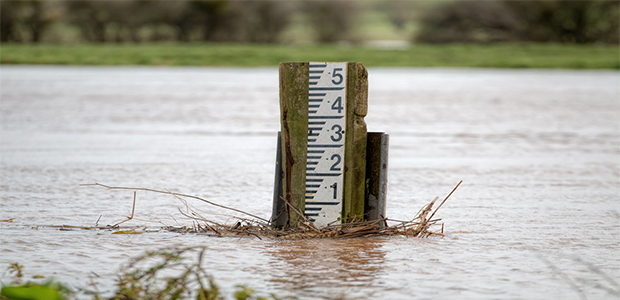
Great Lakes Water Levels Are Rising, and 2020 Could Be No Different
With ocean levels rising, many other bodies of water are affecting cities, too. The Great Lakes are overflowing with record-breaking levels, and 2020 is projected to see no relief.
This year has seen record-breaking water levels for oceans, lakes, and rivers around the world—not because of an increase in water supply, but for a number of climate changes and extreme environmental swings. Rising water levels mean cities and off-shore communities must adapt: their roadways, their flood systems, and their emergency response systems.
The Great Lakes of Michigan have seen record-breaking water levels this year—and scientists think they’ll continue to rise in 2020. This September was particularly rainy for the Great Lakes area, and measurements by the U.S. Army Corps of Engineers show every Great Lake, and Lake St. Clair, well above long-term monthly average water levels for October.
For Lakes Michigan and Huron, levels were a good three feet higher (35 inches), and on Lake St. Clair, levels were up 33 inches. Lake Erie is 29 inches higher than October averages, and Lake Ontario is 20 inches above and Lake Superior 15 inches above.
These levels won’t just diminish with the start of the new year. Forecasters predict Lakes Michigan and Huron will start the 2020 year at 11 inches higher than water levels in January 2019, said Keith Kompoltowicz, chief of watershed hydrology at the U.S. Army Corps of Engineers in Detroit.
“The latest forecast extends into March, and for the most part, levels are going to be on-par with or above where they were at the same time last year,” he said.
Next year’s water levels for the Great Lakes will depend on a number of factors; however, this is the fourth year in a row these factors have been abnormal. Snowpack and heavier-than-usual rains will determine water levels, and since Michigan has seen an increase in these factors for the past four springs, 2020 will likely be no different.
These water levels are breaking records left and right—and they’re not the records you want to break. Lake Superior, Lake St. Clair, Lake Erie, and Lake Ontario all set new record-high levels over the summer. Lakes Michigan and Huron were an inch or less off their 100-year highs. In July, lakes Erie and Ontario broke their monthly records by over four inches.
The issues go far beyond just flooded lake banks and ground erosion, too. The whole region has seen flooded campgrounds and streets, boating problems and submerged structures, and enough shoreline erosion that all but eradicated some Lake Michigan beaches.
The Detroit Free Press provides the following graph from the U.S. Army Corps of Engineers. It shows the water levels for five Great Lakes and the number of inches over the averaged they have breached.
As the U.S. Army Corps of Engineers reports, the lake water elevation for all lakes is higher than the averages of years past--and they're up nearly three feet in some areas.
The region is doing its best to adapt to the high water, but officials can only do so much with such little timing. Detroit, for example, has been piling sandbags to combat the rising Detroit River; but this solution is not fool proof.
Doris Fleming has lived in Harbor Island Street in Detroit’s Jefferson-Chalmers neighborhood for over 60 years. She has seen plenty of flooding off the nearby Detroit River in high-water years, but she said this past spring and summer was among the worst she can remember.
“It’s been bad,” she said. “The city has been pretty good about bringing sandbags in. But if there’s only one opening, it messes it all up.”
Flood waters tend to move up the dead-end Harbor Island Street and into the city blocks, Fleming said. The city has more problems “than we did right here” closer to the river, she said.
Like city officials and residents, Fleming is worried about the projected higher water levels next spring and summer.
The city has had to make other changes to react to the water levels. It has raised docks in its marinas to accommodate higher water. But still, the issue of erosion is a troubling one.
“We fear losing some retaining walls,” said City Manager Thad Taylor. While the city’s boat launches were usable, the docks were under water.
Come the winter months, the high-water troubles will persist when ice and high winds roll in. Last year, the city had ice pushed by winds come ashore and damage its river walk, said Taylor.
“We’re still concerned if it goes up another 4, 5, 6 inches, we’re going to experience additional problems,” Taylor said.